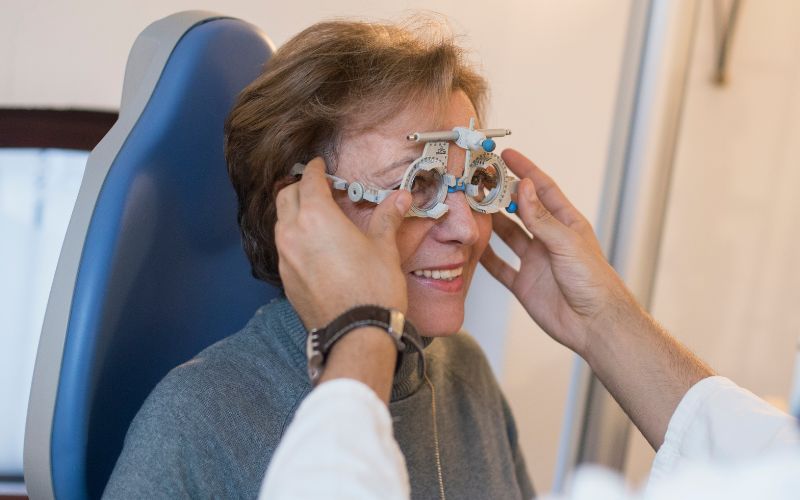As you age and your vision changes, we oftentimes attribute these fluctuations as part of growing older. While it is true that half of those who deal with visual struggles are ages 65 or older, many of the cases were preventable. The good news is that several treatments are available to slow the progression of diminished vision, and even reverse the damage in some instances. The following is a list of some of the most common causes for diminished vision and available therapies.
Dry Eyes
Dry eyes can occur from a number of reasons. Women wearing eye liner tend to block tear ducts, causing eyes to dry over time. People soaking up too much screen time can dry their eyes. Too much sun exposure can also attribute to dry eyes. All of these situations are preventable. Don’t place eye liner on your eyes. Wear protective eye wear in the sun. Take frequent breaks when using a computer. At Dedham Ophthalmic Consultants, we encourage use of preservative-free artificial tears four times a day (even if you don’t think you need them).
Difficulty reading
Presbyopia is a condition that occurs when the cornea lens loses its elasticity and changes shape. When this happens, we lose our close-up vision, and we squint when reading up close to accommodate for the visual loss. Over the counter drugstore readers can help or you may go to an optometrist or ophthalmologist to get prescription reading glasses.
Double vision
As we age, our vision blurs from dryness and we start to experience double vision. The BEST test to see the root cause is to cover an eye with your hand. If the double vision persists, that is great news. This means that you are suffering from dry eyes and lubricant drops will resolve the problem. However, if you cover one eye and the double vision goes away, this means your eyes are misaligned and this can be caused by a myriad of factors, including nerve palsy from a stroke or an aneurysm. The sooner you can determine the source of double vision, the sonner you can address it.
Floaters or flashes
Floaters manifest as dark moving spots that you can see “floating” across your line of vision. They are caused when the gel-like substance in your eye liquifies as it pulls away from the retina. A majority of the time they are not dangerous. But, if the floaters become more frequent and include flashes of lights in your field of vision, please contact an ophthalmologist immediately. You will want to be seen as soon as possible to rule out a retinal tear.
Loss of peripheral vision
Sometimes as we age, we lose our ability to see out of the sides of our eyes. The loss of vision in our periphery is often caused by pressure build up in the eye which causes damage to the optic nerve. A rapid loss of side vision could be brought on by a stroke or tumor. If you experience a loss in your side vision that is accompanied with flashes and floaters, be sure to contact an ophthalmologist immediately.
Sharp shooting eye pain
Sometimes we may incur a sharp shooting pain that lasts for seconds. If that happens, no need to fear. If the pain lasts for quite some time, or is a recurring pain accompanied by redness, discharge, or blurry vision, be sure to connect with an ophthalmologist. Eye pain is often associated with a foreign body, infection or injury.
Dark spots
People describe floaters as spots that move when the eye does. But if you’re seeing a blurry or blind spot in the center of your vision when you’re reading a book or watching TV, that’s not a floater. Choroidal neovascular macular degeneration (aka wet AMD) is one concern; abnormal blood vessels grow under the retina and can leak fluid. Wet AMD can be treated effectively with drugs and other therapies — only if you catch it early.
Reduced night vision
When nighttime falls upon us, our pupils dilate in order to allow in more light to be able to see. If the pupil does not dilate to allow for sufficient light, we can experience reduced ability to see at night. We may even experience more likely to see cloudy vision with oncoming headlights or glare around them. Most of the time, this is something a simple glasses prescription can resolve, but the other possibility is cataracts. Cataract surgery is as common as the seasonal cold and its success rate is extremely high.





